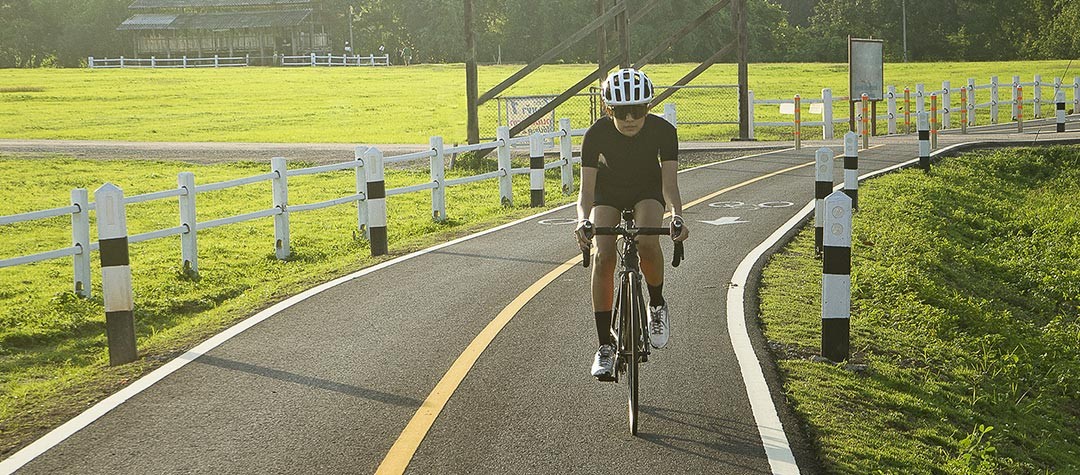Whether you’ve built your own cycling training programme, bought one, found a free one, or enlisted the help of a coach to put one together for you, there may be a few areas where your plan is lacking and could use a couple of tweaks to improve it.
Any programme, no matter how individualised, has to be flexible and despite looking great on paper, can likely benefit from an iterative approach of continual improvement.
With that thought, let’s take a look at some of the best ways that a cycling training plan might be improved, so that you can raise your game and produce better performances than ever before this season.
Keep a training diary
A big mistake that a lot of cyclists make is not keeping a log of how their training is going, either in the form of a written diary or by using the post-workout comment or training diary features online.
A big part of improving your training plan from week-to-week, month-to-month and season-to-season is learning what worked and what didn’t work in the past, so that you can do more of the former and less of the latter! Leaving simple one or two sentence comments on how you were feeling during a ride or whether you actually found it enjoyable is often all it takes to give your future-self some useful information to act on when looking back.
You’ll quickly start to see patterns emerging and be able to identify which workouts you most look forward to and are therefore motivated to perform, as well as which are most effective at raising your fitness and giving rise to peak performances.
Give yourself options
Whilst keeping a diary can help you see which workouts work best for you, that’s not to say you shouldn’t try new sessions or tweak some of your existing ones. Variety is key to developing your fitness over the long term and there’s always more than one way to build fitness is a particular area, be that your endurance, your threshold power or VO2max. By constantly changing things up, you’ll ensure that your body is challenged in different ways and doesn’t get desensitised to a particular workout.
A good tip here is to create a workout library i.e. a collection of training sessions that will feature in your weekly plan. Within this library, try to include multiple sessions for any given goal or purpose, so that you can easily drag and drop one into the plan or quickly tweak the day’s session.
For example, you might have 2-3 different endurance ride workouts to choose from, where one is a steady-state ride, another is a steady ride with intervals at the end and another with some short bursts throughout. All workouts have the same desired outcome, but challenges the body in slightly different ways.
‘Polarise’ your training
Whilst this might sound like a fancy term, the concept behind ‘polarising’ your training is actually quite a simple one, and comes from observations of how the world’s leading athletes tend to organise their training. It concerns manipulating the intensity of your plan so that training time is either spent going relatively easy or very hard, avoiding that grey middle area where workouts are too hard to allow you to recover quickly, but also not hard enough to stimulate any significant adaptations.
Using either a power meter or heart rate monitor, try to aim for about 80 per cent of your workouts to be at lower intensities (e.g. zones 1 and 2) and about 20% at higher intensities (e.g. zone 5) whilst avoiding excessive training time in that middle Zone 3 and 4 area.
What this should help you to do is strike a balance between being rested enough to complete the hardest sessions of the week to the highest quality possible, but also spend a large amount of time on the bike throughout the week, which is important for your overall aerobic condition.
Add core strength and cross training
One of the worst things that can happen to any cyclist is getting injured, and this can really derail your training both in the short and sometimes the long-term too. Fortunately, with just a little bit of additional training off-the-bike, you can dramatically reduce the chance of picking up an injury and instead maintain good consistency.
Try to support and supplement your bike training with some short but purposeful core strength training sessions throughout the week. Even workouts of 20-30 minutes can have a huge positive impact on vulnerable parts of your body like the knees, lower back and hips.
Depending on the time of year, you might also look at including some cross training activities and exercises into your plan too. These might involve hiking, running or swimming, but generally anything that works some different muscle groups and gets the heart rate elevated will do the trick. This can help fill in the strength gaps that cycling alone can miss, and prevents certain muscles having to compensate for others than are weak, which can easily cause injuries to arise.
Periodise your plan
Another buzz word when it comes to training, periodising your plan really boils down to having some kind of development throughout your programme and implies having a specific order to the way workouts, weeks and blocks are arranged.
Creating an annual plan that lists all of your important races is a good place to start, since this will allow you to work backwards from where you need to be at your peak fitness to plan the necessary goals and constituent steps to get there. A commonly used way to prioritise these races is with an A, B, C classification, where A races are the most important.
If you haven’t already, look at dividing your programme into distinct blocks of 3-5 weeks that ascend in difficulty before ending with an easier week to allow you to offload the accumulated fatigue and ultimately get fitter from the training done.
With each block, make sure you have a clear purpose and key area for improvement, starting off with general aerobic endurance earlier in the season and progressing to intensities that mimic and even go beyond that of your target events as you approach the times where you want to be at your best.
Build in fun rides
Finally, taking a break from structured training can have a really positive effect on your fitness and performance, so making sure to include some casual, fun rides in your programme is very important. When doing so, you might want to take the opportunity to ride with friends, explore a new area or maybe ride a different kind of bike than usual (e.g. a mountain bike or cyclocross bike).
Not worrying about the numbers and instead focusing on making these rides as enjoyable as possible is what’s key, so consider leaving your Garmin or other head unit at home or at least hiding it from view! You’ll often find that such rides will remind you of why you got started cycling in the first place, as well as give you the motivation and drive to get back to your regular training programme if you’re starting to feel a little burnt out.













